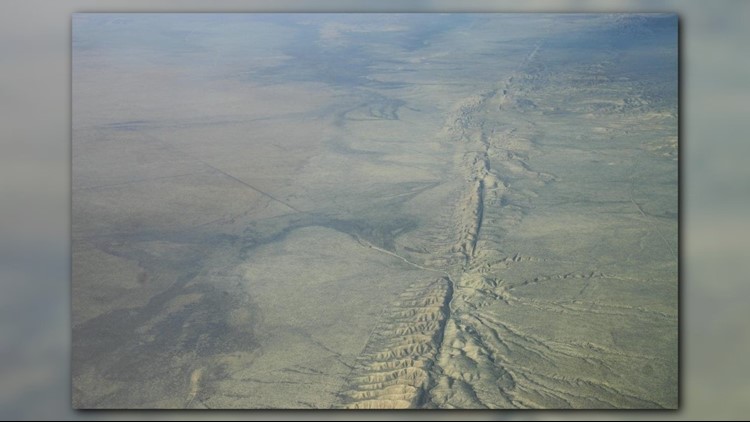PHOENIX - Though we don't get big earthquakes here in Arizona, it's an ever-present threat in California, especially along the San Andreas Fault.
Scientists with the U.S. Geological Survey have said that some sections of the fault appear to be past the average time between earthquakes, according to paleoseismic data. To put it colloquially, "the Big One is overdue."
New research by two geophysicists at Arizona State University suggests stop-and-go movements along the fault's central section, known as "slow earthquakes," could increase the risk of a big one hitting.
RELATED STORY: What would Arizona do if ‘The Big One’ hit California?
Science writer Robert Burnham with ASU's School of Earth and Space Exploration explained in an article that geologists previously thought the 90-mile section had a steady creeping movement, which would allow energy to be released safely.
However, what the researchers found was that the movement wasn't so steady after all.
Mostafa Khoshmanesh, a graduate research assistant in ASU's School of Earth and Space Exploration and lead author of the paper published in Nature Geoscience, said in Burnham's article that what looked like a steady creep was actually an accumulation of localized stick-and-slip movements.
Manoochehr Shirzaei, assistant professor at the School of Earth and Space Exploration and co-author of the research paper, added that these episodic movements can increase stress on adjacent locked segments on the fault—increasing the risk of a larger, more destructive quake.
One example the study cites is a magnitude 6 earthquake that shook Parkfield, California, in 2004. The researchers contend that this quake may have been triggered by a slow earthquake that increased stress on nearby areas of the fault.
The new observation means the earthquake hazard in California is higher than previously thought.
Khoshmanesh said in Burnham's article that there is a 75 percent chance for an earthquake of magnitude 7 or larger in northern and southern California within the next 30 years.



